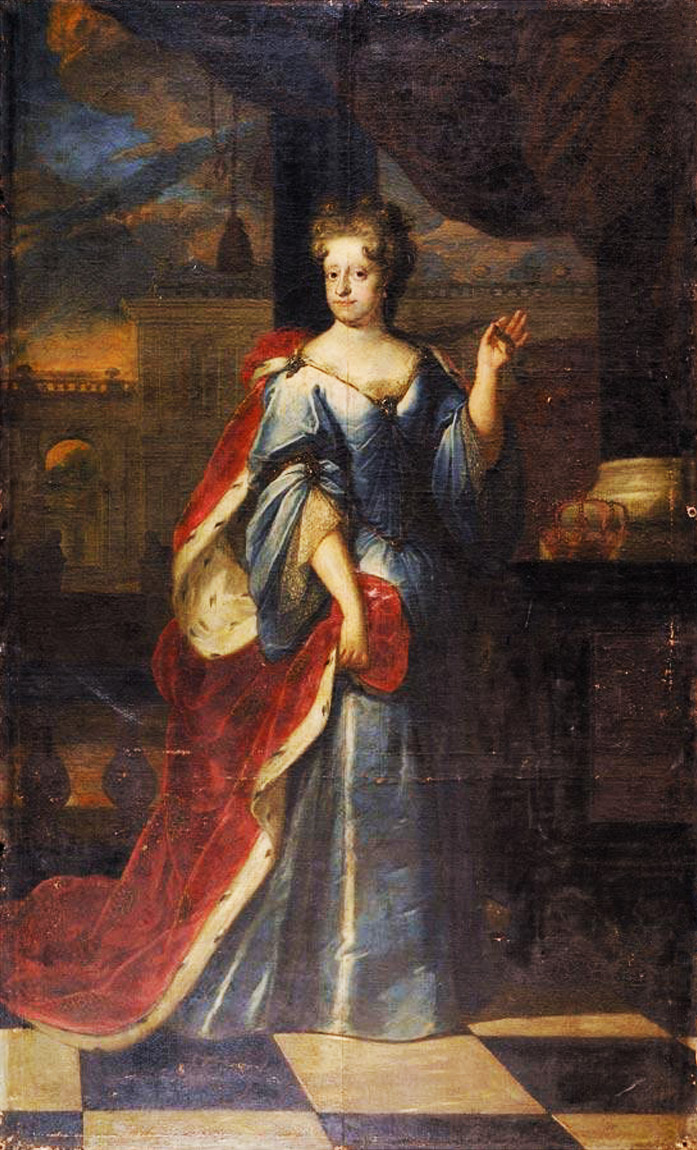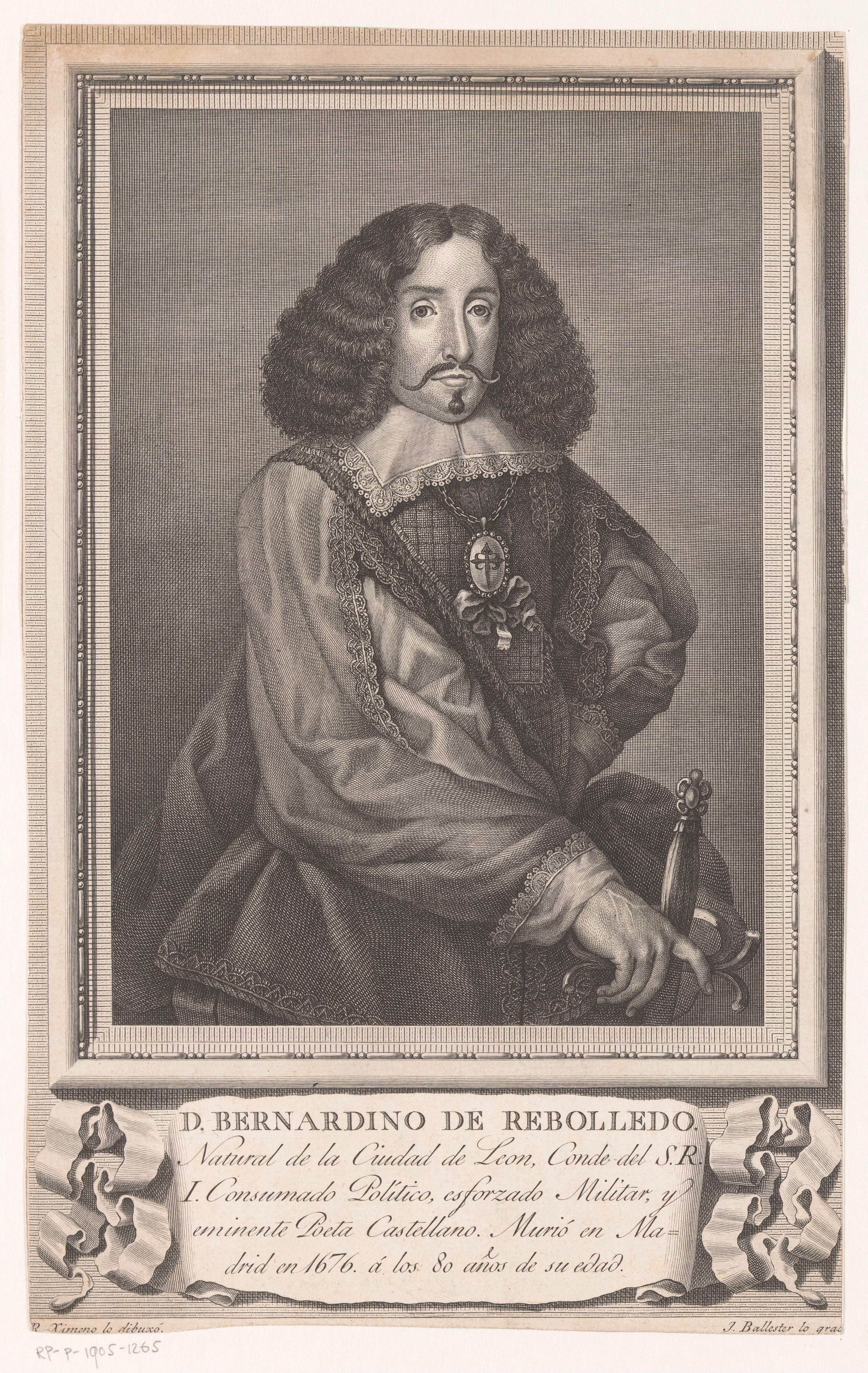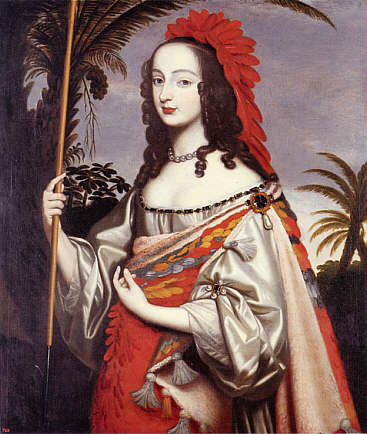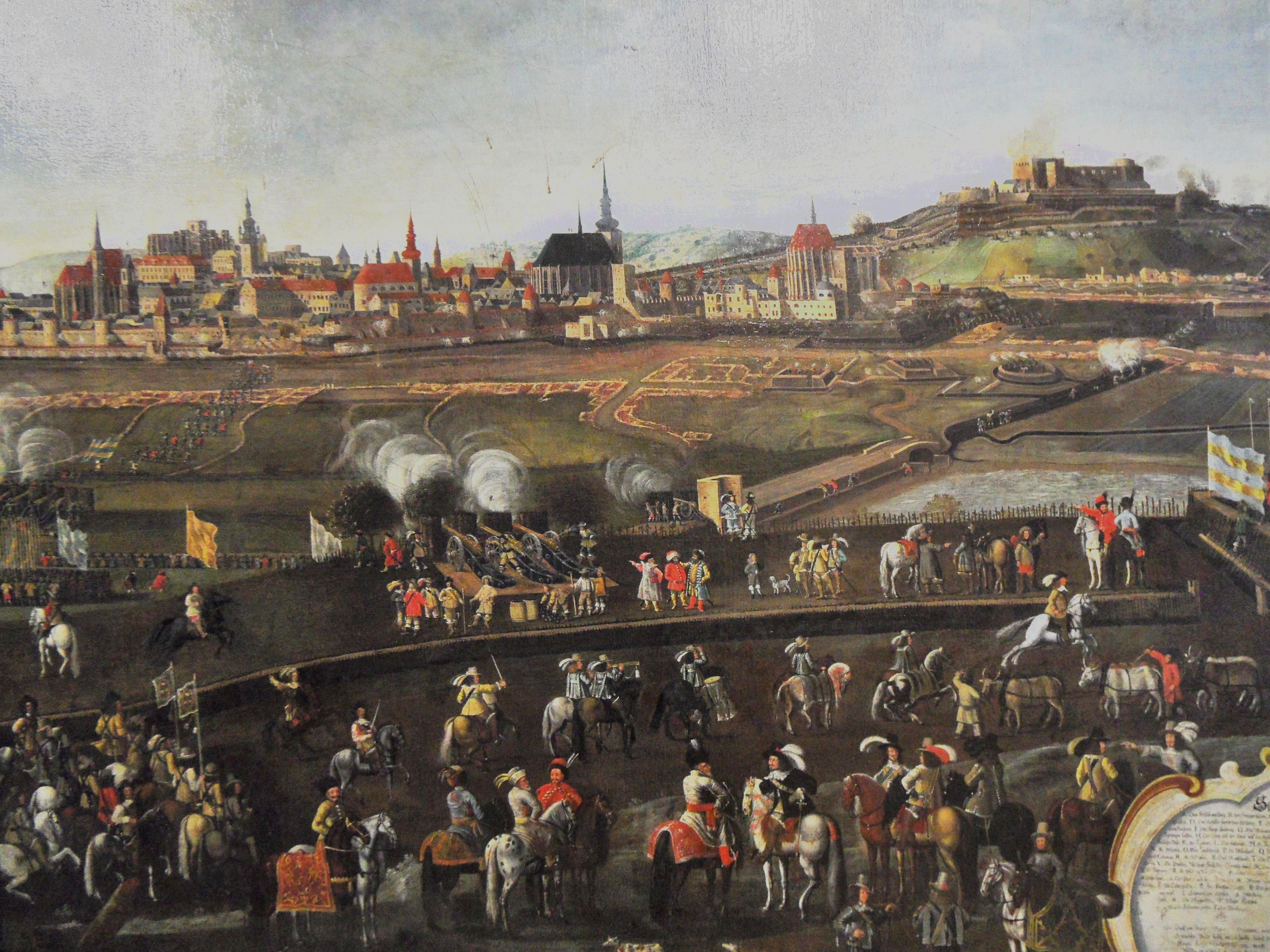|
Sophie Amalie Of Brunswick-Calenberg
Sophie Amalie of Brunswick-Calenberg (24 March 1628 – 20 February 1685) was Queen of Denmark and Norway as the consort of the King Frederick III of Denmark. She is known for her political influence, as well as for her cultural impact: she acted as the adviser of her husband, and introduced ballet and opera to Denmark. Danske dronniger; fortaellinger og karakteristikker af Ellen Jorgensen og Johanne Skovgaard', Kobenhavn H. Hagerup, 1910 Life Early life Sophie Amalie was born at the Herzberg Castle, in Herzberg am Harz. Her parents were George, Duke of Brunswick-Calenberg, and Anne Eleonore of Hesse-Darmstadt. Nothing is known of her childhood. Sophie Amalie married Prince Frederick in Castle Glücksburg on 1 October 1643. The marriage was arranged in 1640, as it was considered suitable for the current situation of the groom: he was, at that point, archbishop of Bremen and not heir to the throne, and was not expected to succeed to the throne. It is believed to be a politic ... [...More Info...] [...Related Items...] OR: [Wikipedia] [Google] [Baidu] |
Abraham Wuchters
Abraham Wuchters (1608 – 23 May 1682) was a Brabant-born Dutch- Danish painter and engraver. He was born in Antwerp but had most of his career in Denmark where he and Karel van Mander III became the preferred painters of the Danish King, nobility and bourgeoisie. Together they represent the main influence from the Dutch Golden Age on Danish Baroque art. Biography Wuchters was born in Antwerp in 1608. In 1635 he married Christina Cornelis Nunts in Zwolle. He arrived in Denmark in 1638 and was, the following year, employed as sketching master at Sorø Academy. Around the same time, he was summoned to Copenhagen where he painted several portraits of King Christian IV. In 1645 he returned to Copenhagen Castle to portray the King's children, including ''Ulrik Christian Gyldenløve'' (c. 1645, Danish National Gallery) and ''Duke Frederik (III)'' (c. 1645, Amalienborg Palace). In two periods, between 1658 and 1662, he worked at the Royal Swedish Court in Stockholm where he portra ... [...More Info...] [...Related Items...] OR: [Wikipedia] [Google] [Baidu] |
Roskilde Cathedral
Roskilde Cathedral ( da, Roskilde Domkirke), in the city of Roskilde on the island of Zealand (Denmark), Zealand (''Sjælland'') in eastern Denmark, is a cathedral of the Lutheranism, Lutheran Church of Denmark. The cathedral is the most important church in Denmark, the official royal burial church of the Danish monarchs, and a UNESCO World Heritage Site. This is due to two criteria: the architecture of the cathedral shows 800 years of European architectural styles, and it is one of the earliest examples in Scandinavia of a Gothic architecture, Gothic cathedral to be built in brick; it encouraged the spread of the Brick Gothic style throughout Northern Europe. Constructed during the 12th and 13th centuries, the cathedral incorporates both Gothic and Romanesque architecture, Romanesque architectural features in its design. The cathedral has been the main burial site for List of Danish monarchs, Danish monarchs since the 15th century. As such, it has been significantly extended and a ... [...More Info...] [...Related Items...] OR: [Wikipedia] [Google] [Baidu] |
Bernardino De Rebolledo
Bernardino de Rebolledo y Villamizar, Earl of Rebolledo and Graf (Count) of the Holy Roman Empire was a Spanish poet, soldier and diplomat ( León, baptized May 31, 1597 - Madrid, March 27, 1676). He was a descendant of the 1st Count of Rebolledo, don Rodrigo, who received his surname and title from the king of Asturias and León don Ramiro I in 815 during the Reconquista. Biography A distinguished soldier, he fought in Italy, the Mediterranean and Flanders. Besides his military commitments, he was a diplomat (he served as ambassador in Denmark from 1648 to 1661). Fighting for the Habsburg side, Rebolledo played a prominent role in the Thirty Years War. During the Thirty Years War, Rebolledo was commander in chief for a Spanish army division and defeated the Swedish army at Frankenthal. Holy Roman Emperor Ferdinand III appointed him Governor of Westphalia and gave him the German noble title ''Gref av Westphalia länder''. De Rebolledo was one of Spanish negotiators of Westp ... [...More Info...] [...Related Items...] OR: [Wikipedia] [Google] [Baidu] |
Sophia Of Hanover
Sophia of Hanover (born Princess Sophia of the Palatinate; 14 October 1630 – 8 June 1714) was the Electress of Hanover by marriage to Elector Ernest Augustus and later the heiress presumptive to the thrones of England and Scotland (later Great Britain) and Ireland under the Act of Settlement 1701, as a granddaughter of James VI and I. Princess Sophia died less than two months before she would have become Queen of Great Britain. Consequently, her son (and grandson of Elizabeth Stuart, Queen of Bohemia) George I, succeeded her first cousin once removed, Queen Anne, to the British throne, and the succession to the throne has since been defined as, and composed entirely of, her legitimate and Protestant descendants. Sophia was born in 1630 to Frederick V of the Palatinate, a member of the House of Wittelsbach, and Elizabeth Stuart, daughter of King James VI and I. She grew up in the Dutch Republic, where her family had sought refuge after the sequestration of their Electo ... [...More Info...] [...Related Items...] OR: [Wikipedia] [Google] [Baidu] |
Anne Chabanceau De La Barre
Anne Chabanceau de La Barre (1628–1688) was a French soprano of the baroque era. She was the daughter of Pierre Chabanceau de La Barre (1592-1656), organist of the '' chapelle royale'' at Notre-Dame, ''sieur'' of La Barre,Jacques-Gabriel Prod’homme ''Ecrits de musiciens: (XVe-XVIIIe siècles)'' 1985 "LES CHABANCEAU DE LA BARRE (xvne siècle; Il yeut au dix-huitième siècle, plusieurs musiciens du nom de La Barre. Pierre de Chabanceau, fils de Pierre Chabanceau, sieur de La Barre, organiste de Notre-Dame," and sister of Joseph Chabanceau de La Barre (1633-1678), composers of airs. Anne made her debut in opera in 1647 in ''Orfeo'' by Luigi Rossi. Between 1652 and 1654, she travelled widely in Northern Europe, and sang at the court of Queen Christina of Sweden in Stockholm for some time. She was made ''kammarsångerska'', singer of the royal court in 1653-1654, alongside her brother Joseph (1633–78) who was court singer in 1650-1654. She later appeared at the court of D ... [...More Info...] [...Related Items...] OR: [Wikipedia] [Google] [Baidu] |
Masquerade Ball
A masquerade ball (or ''bal masqué'') is an event in which many participants attend in costume wearing a mask. (Compare the word " masque"—a formal written and sung court pageant.) Less formal " costume parties" may be a descendant of this tradition. A masquerade ball usually encompasses music and dancing. These nighttime events are used for entertainment and celebrations. History Masquerade balls were a feature of the Carnival season in the 15th century, and involved increasingly elaborate allegorical Royal Entries, pageants, and triumphal processions celebrating marriages and other dynastic events of late medieval court life. The " Bal des Ardents" (''"Burning Men's Ball"'') was held by Charles VI of France, and intended as a ''Bal des sauvages'' (''"Wild Men's Ball"''), a form of costumed ball (''morisco''). It took place in celebration of the marriage of a lady-in-waiting of Charles VI of France's queen in Paris on January 28, 1393. The King and five courtiers ... [...More Info...] [...Related Items...] OR: [Wikipedia] [Google] [Baidu] |
Sophie Amalieof Brunswick Queen Of Denmark
Sophie is a version of the female given name Sophia, meaning "wise". People with the name Born in the Middle Ages * Sophie, Countess of Bar (c. 1004 or 1018–1093), sovereign Countess of Bar and lady of Mousson * Sophie of Thuringia, Duchess of Brabant (1224–1275), second wife and only Duchess consort of Henry II, Duke of Brabant and Lothier Born in 1600s and 1700s * Sophie of Anhalt-Zerbst (1729–1796), later Empress Catherine II of Russia * Sophie Amalie of Brunswick-Lüneburg (1628–1685), Queen consort of Denmark-Norway * Sophie Blanchard (1778–1819), French balloonist * Sophie Dorothea of Württemberg (1759–1828), second wife of Tsar Paul I of Russia * Sophie Dawes, Baronne de Feuchères ( 1795–1840), English baroness * Sophie Germain (1776–1831), French mathematician * Sophie Piper (1757–1816), Swedish countess * Sophie Schröder (1781–1868), German actress * Sophie von La Roche (1730–1807), German author Born 1790–1918 * Sophie, Duchess of Al ... [...More Info...] [...Related Items...] OR: [Wikipedia] [Google] [Baidu] |
Torstenson War
The Torstenson war, Hannibal controversy or Hannibal War ( no, Hannibalsfeiden) was a short period of conflict between Sweden and Denmark–Norway from 1643 to 1645 towards the end of the Thirty Years' War. The names refer to Swedish general Lennart Torstenson and Norwegian governor-general Hannibal Sehested. Denmark had withdrawn from the Thirty Years' War in the Treaty of Lübeck (1629). After its victories in the war, Sweden felt it had to attack Denmark-Norway due to its advantageous geographical position in relation to Sweden. Sweden invaded in a short two-year war. In the Second Treaty of Brömsebro (1645), which concluded the war, Denmark-Norway had to make huge territorial concessions and exempt Sweden from the Sound Dues, ''de facto'' acknowledging the end of the Danish '' dominium maris baltici''. Danish efforts to reverse this result in the Second Northern, Scanian and Great Northern wars failed. Background Sweden had been highly successful in the Thirty Year ... [...More Info...] [...Related Items...] OR: [Wikipedia] [Google] [Baidu] |
Flensborg
Flensburg (; Danish, Low Saxon: ''Flensborg''; North Frisian: ''Flansborj''; South Jutlandic: ''Flensborre'') is an independent town (''kreisfreie Stadt'') in the north of the German state of Schleswig-Holstein. Flensburg is the centre of the region of Southern Schleswig. After Kiel and Lübeck, it is the third largest town in Schleswig-Holstein. The nearest larger towns are Kiel ( south) and Odense in Denmark ( northeast). Flensburg's city centre lies about from the Danish border. Known for In Germany, Flensburg is known for: * the Kraftfahrt-Bundesamt (roughly: National Driver and Vehicle Register) with its ''Verkehrssünderkartei'' (literally: "traffic sinner card file"), where details of traffic offences are stored * its beer '' Flensburger Pilsener'', also called "''Flens''" * the centre of the Danish national minority in Germany * the greeting Moin Moin * the large erotic mail-order companies ''Beate Uhse'' and ''Orion'' * its handball team SG Flensburg-Handewitt * ... [...More Info...] [...Related Items...] OR: [Wikipedia] [Google] [Baidu] |
Charles XI Of Sweden
Charles XI or Carl ( sv, Karl XI; ) was King of Sweden from 1660 until his death, in a period of Swedish history known as the Swedish Empire (1611–1721). He was the only son of King Charles X Gustav of Sweden and Hedwig Eleonora of Holstein-Gottorp. His father died when he was four years old, so Charles was educated by his governors until his coronation at the age of seventeen. Soon afterward, he was forced out on military expeditions to secure the recently acquired dominions from Danish troops in the Scanian War. Having successfully fought off the Danes, he returned to Stockholm and engaged in correcting the country's neglected political, financial, and economic situation. He managed to sustain peace during the remaining 20 years of his reign. Changes in finance, commerce, national maritime and land armaments, judicial procedure, church government, and education emerged during this period. Charles XI was succeeded by his only son Charles XII, who made use of the well- ... [...More Info...] [...Related Items...] OR: [Wikipedia] [Google] [Baidu] |
Ulrike Eleonora Of Denmark
Ulrika Eleonora of Denmark (11 September 1656 – 26 July 1693) was Queen of Sweden as the wife of King Charles XI. She is often admired for her generosity and charity. The name ''Ulrike'' is a Danish version of the name; in Swedish she is called ''Ulrika Eleonora den äldre'' (English: ''Ulrica Eleanor the Elder''), to distinguish her from her daughter, the future queen regnant. Life Early life and marriage Ulrika Eleonora was the daughter of King Frederick III of Denmark-Norway and his spouse, Queen Sophie Amalie of Brunswick-Lüneburg. She was given a strict upbringing under the supervision of her mother: she was taught several different languages, and was reportedly a good student in drawing and painting. In 1675 she was betrothed to King Charles XI of Sweden. The purpose of the match, though from the Swedish viewpoint, was to prevent Denmark from forming an alliance with the enemies of Sweden. Her brother, the King of Denmark-Norway, was not enthusiastic about t ... [...More Info...] [...Related Items...] OR: [Wikipedia] [Google] [Baidu] |








_en2.png)
